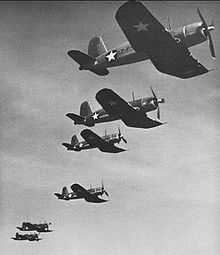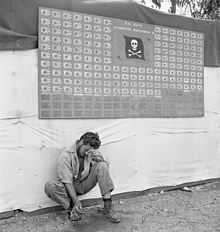VF-61


Fighter Squadron 61 (The Jolly Rogers) was a Fighter Squadron of the United States Navy until its disestablishment on April 15, 1959.
Three U.S. Naval Aviation squadrons have used the name and insignia of the Jolly Roger: VF-17/VF-5B/VF-61, VF-84 (est. 1955), and VFA-103.
The first incarnation of the Jolly Rogers was established on January 1, 1943 at NAS Norfolk, as VF-17 by Lieutenant Commander John T. "Tommy" Blackburn.[1] It was the second Navy fighter squadron to receive the F4U-1 Corsair and the most successful of them all.
Blackburn wanted a squadron insignia which would live up to the Corsair name; hence the skull and crossbones were chosen. The original design was developed by Harry Hollmeyer who became an ace pilot. The squadron helped during the development of the F4U Corsair resulting in some design changes, resulting in the F4U-1A. Unfortunately, the Navy still deemed the Corsair "unfit" for carrier service and instead of joining USS Bunker Hill, VF-17 became a land-based squadron in the Solomon Islands during most of its deployment to the South Pacific.
On November 8, 1943, the squadron Executive Officer, Roger Hedrick, led a flight which intercepted 39 Japanese fighters over Empress Augusta Bay, Bougainville. As the Japanese fighters fled back to their base, VF-17 was responsible for downing 3 fighters and damaging 4 others. Though outnumbered, the squadron survived the encounter with no losses. This action was typical of the squadron's land-based service in the Solomon Islands in 1943 and 1944, when it went up against the cream of Imperial Japanese Navy pilots then based at Rabaul.
In its two tours of duty in the Solomon Islands, VF-17 had 152 aerial victories and produced 11 aces. VF-17 finished its combat tour on May 10, 1944 and was equipped with the F6F-5 Hellcat moved to the USS Hornet. The squadron amassed 161 victories, and produced 12 aces. Overall, the two combat tours of VF-17 were credited with 313 victories, the most of any US Navy squadron. VF-17 was redesignated as VF-5B in 1946, and as VF-61 in 1948. In addition to the F4U-4 Corsair and F6F-5P Hellcat, it flew the F8F-2 Bearcat, F9F-2 Panther and the F9F-8 Cougar. It was disestablished on April 15, 1959.